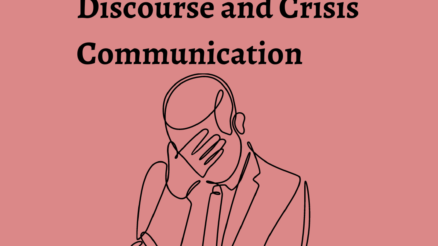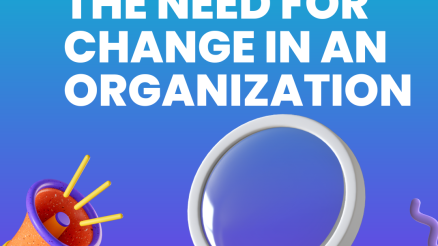Stakeholder journey map is a powerful tool that helps businesses understand and improve the experiences of the people who matter most to them.
Whether you’re a customer, employee, investor, or partner, your journey with a company involves different touchpoints and emotions.
In this blog post, we’ll break down what a stakeholder journey map is and why it matters.
Imagine it like a roadmap that shows a company all the stops and turns in your journey with them, helping them make things better and more enjoyable for you.
So, if you’ve ever wondered how businesses work to make your experience smoother and more satisfying, you’re in the right place!
Let’s dive in and explore the world of stakeholder journey mapping together.
what is stakeholder?
A stakeholder is an individual, group, or organization that has an interest or concern in the activities, decisions, or outcomes of another entity, such as a business, project, or community.
Stakeholders can be directly or indirectly affected by the actions and performance of the entity in which they have an interest.
They play a crucial role in influencing or being influenced by the entity’s goals, decisions, and operations.
Stakeholders can be categorized into various groups based on their relationship with the entity.
Here are common types of stakeholders:
Internal Stakeholders:
Employees: Individuals working within the organization.
Managers and Executives: Leaders responsible for decision-making and strategic direction.
Shareholders or Owners: Individuals or entities that own shares or have ownership stakes in the organization.
External Stakeholders:
Customers: Individuals or entities that purchase goods or services from the organization.
Suppliers: Individuals or businesses providing goods or services to the organization.
Partners and Collaborators: Other entities with which the organization collaborates or forms partnerships.
Government and Regulatory Bodies: Entities that oversee and regulate the operations of the organization.
Community: Residents and groups within the community where the organization operates.
Investors: Individuals or institutions that invest capital in the organization with the expectation of a return.
Creditors: Entities or individuals to whom the organization owes debts or financial obligations.
Competitors: Other organizations within the same industry or market that may be impacted by the actions of the entity.
The importance of stakeholder management lies in recognizing and understanding the diverse interests, expectations, and influences of these different groups.
Effective stakeholder engagement involves communication, collaboration, and addressing the concerns of key stakeholders to build positive relationships and contribute to the overall success and sustainability of the entity.
Stakeholder analysis is a process used to identify and assess the interests, influence, and potential impact of various stakeholders on a project or organization. This analysis helps in developing strategies to manage and engage stakeholders effectively.
Read more about how to do stakeholder analysis.
What is stakeholder journey map?
A stakeholder journey map is a visual representation or diagram that outlines the various interactions, touchpoints, and experiences a stakeholder has with a particular organization, product, or service over time.
The purpose of a stakeholder journey map is to gain a deeper understanding of the stakeholder’s perspective and experiences throughout their interactions with the organization.
05 Elements of stakeholder journey map
A stakeholder journey map typically includes various elements that help businesses gain a comprehensive understanding of the experiences and interactions stakeholders have with their organization.
Here are explanations for each of the five key elements:
Identification of Touchpoints
Touchpoints refer to the various points of interaction between stakeholders and the organization.
These interactions can occur through different channels, such as online platforms, physical locations, customer service, social media, and more.
Identifying touchpoints is crucial for understanding where and how stakeholders engage with the organization.
This insight helps businesses tailor their strategies to enhance these interactions and provide a seamless experience.
Emotional Journey
The emotional journey represents the range of emotions stakeholders may experience during their interactions with the organization.
This includes positive emotions like satisfaction and delight, as well as negative emotions like frustration or confusion.
Understanding the emotional journey is key to building positive relationships with stakeholders. Businesses can design experiences that evoke positive emotions and address pain points to improve overall satisfaction.
Goals and Objectives
Goals and objectives refer to the desired outcomes and purposes stakeholders have at different stages of their journey with the organization.
This could include goals related to information seeking, decision-making, purchasing, support, etc.
Knowing the goals and objectives of stakeholders helps organizations align their processes and strategies to meet these needs effectively.
It ensures that the business is focused on fulfilling the key expectations of its stakeholders.
Pain Points and Opportunities
Pain points are areas where stakeholders encounter challenges, frustrations, or dissatisfaction during their journey.
Opportunities, on the other hand, are areas where positive experiences can be created or improvements can be made.
Identifying pain points and opportunities is essential for addressing issues and enhancing the overall stakeholder experience.
By proactively resolving pain points and leveraging opportunities, organizations can improve satisfaction and loyalty.
Feedback and Perception
Feedback and perception involve collecting and analyzing input from stakeholders regarding their experiences.
This includes formal feedback through surveys, reviews, and informal feedback gained from social media or direct communication.
Understanding stakeholder feedback and perception provides valuable insights into how the organization is perceived.
It helps in making informed decisions, adjusting strategies, and continuously improving to meet the changing expectations of stakeholders.
Benefits of stakeholder journey map
Following are the benefits of stakeholder journey map.
1. Improved Customer Experience
One of the primary benefits of creating a stakeholder journey map is the significant improvement in customer experience.
By mapping out the entire journey, businesses gain a holistic understanding of the stakeholders’ interactions, pain points, and emotional experiences at each touchpoint.
This insight enables organizations to identify areas for enhancement and implement changes that streamline processes, reduce friction, and ultimately create a more positive and satisfying experience for the stakeholders.
Improved customer experiences often lead to increased loyalty, repeat business, and positive word-of-mouth referrals.
2. Enhanced Stakeholder Engagement
Stakeholder journey mapping fosters a deeper level of engagement with various stakeholders, including customers, employees, suppliers, and investors.
By acknowledging and addressing the unique needs and expectations of each stakeholder group, organizations can tailor their communication strategies and interactions.
This personalized approach enhances engagement, as stakeholders feel more valued and understood.
Engaged stakeholders are more likely to actively participate in surveys, provide valuable feedback, and contribute positively to the overall success of the business.
3. Identification of Pain Points and Opportunities
Stakeholder journey maps provide a systematic way to identify pain points and opportunities throughout the entire stakeholder experience.
Pinpointing pain points allows organizations to address specific challenges that stakeholders may face, leading to a smoother and more satisfactory journey.
Simultaneously, recognizing opportunities enables businesses to capitalize on positive experiences and strategically enhance those areas to further benefit stakeholders.
This dual approach empowers organizations to make targeted improvements that have a meaningful impact on stakeholder satisfaction and overall business performance.
4. Proactive Problem Resolution
With a detailed stakeholder journey map, organizations can proactively address issues before they escalate.
By anticipating potential pain points or areas of dissatisfaction, businesses can implement preventive measures and strategic solutions.
This not only improves the overall stakeholder experience but also helps in building trust and credibility.
Proactive problem resolution demonstrates a commitment to stakeholder satisfaction, fostering a positive relationship and mitigating the risk of negative repercussions that may arise from unresolved issues.
5. Strategic Decision-Making and Alignment
Stakeholder journey mapping provides organizations with valuable data and insights that inform strategic decision-making.
By aligning internal processes and strategies with the needs and expectations of stakeholders, businesses can ensure that their efforts are focused on initiatives that truly matter.
This alignment contributes to the overall success of the organization by prioritizing actions that have a direct and positive impact on stakeholder satisfaction, loyalty, and the achievement of business goals.
It also helps in avoiding missteps that could lead to disengagement or dissatisfaction among key stakeholders.
Stakeholder journey map template
A stakeholder journey map template is a pre-designed framework that businesses can use to create visual representations of the experiences and interactions stakeholders have with their organization.
Templates provide a structured and organized format, making it easier for businesses to systematically map out the various touchpoints, emotions, and key elements of the stakeholder journey.
While specific templates may vary, a typical stakeholder journey map template includes the following components:
Stakeholder Persona Section
Description: This section outlines the key characteristics, needs, and goals of the different stakeholder personas. It helps set the stage for understanding the diversity of stakeholders and tailoring the journey map accordingly.
Use: This section provides a foundation for identifying touchpoints and designing experiences that align with the specific requirements of each stakeholder group.
Timeline or Journey Stages
Description: A visual representation of the different stages or phases in the stakeholder journey. This could include stages like awareness, consideration, engagement, purchase, and post-purchase.
Use: Helps in organizing the stakeholder journey into logical steps, making it easier to analyze and address experiences at each stage.
Touchpoints and Interactions
Description: Specific points of contact or interactions between the stakeholders and the organization. This could include online and offline touchpoints such as website visits, social media engagement, customer support, and product/service usage.
Use: Identifying touchpoints helps businesses understand where and how stakeholders engage, enabling them to optimize these interactions for a better overall experience.
Emotional Journey
Description: A depiction of the emotional highs and lows that stakeholders may experience at different touchpoints or stages. This could include positive emotions like satisfaction and delight, as well as negative emotions such as frustration or confusion.
Use: Understanding the emotional journey allows businesses to design experiences that evoke positive emotions and address pain points to enhance overall satisfaction.
Goals and Objectives
Description: Clear articulation of the goals and objectives that stakeholders have at each stage of their journey. This could include informational goals, decision-making goals, or transactional goals.
Use: Helps businesses align their strategies to meet the specific needs and expectations of stakeholders at different points in their journey.
Pain Points and Opportunities
Description: Identification of pain points or challenges that stakeholders may encounter, as well as opportunities for improvement or enhancement.
Use: Pinpointing pain points helps organizations address specific issues, while recognizing opportunities allows them to capitalize on positive experiences.
Real life example of stakeholder journey map
Let’s consider a real-life example of a stakeholder journey map for a retail company, focusing on the customer stakeholder group:
Persona Development
Description: The company identifies key customer personas based on demographic data, behavior patterns, and preferences. These personas may include a tech-savvy millennial, a busy working parent, and a retired individual looking for convenience.
Use: Understanding the diverse customer personas helps the company tailor its services to meet the specific needs and expectations of each segment.
Timeline or Journey Stages
Description: The customer journey is divided into stages such as awareness, consideration, purchase, post-purchase, and loyalty. For example, the awareness stage might involve online research, while the post-purchase stage focuses on customer support and feedback.
Use: Organizing the journey into stages allows the company to analyze and address customer experiences at each step, optimizing interactions for a seamless overall experience.
Touchpoints and Interactions
Description: The touchpoints include online interactions (website visits, social media engagement), physical interactions (in-store visits), and transactional touchpoints (online purchases).
Use: Identifying touchpoints helps the company understand where customers engage, allowing for optimization and improvement of these interactions for a better overall experience.
Emotional Journey
Description: The emotional journey map highlights moments of satisfaction (finding the right product), frustration (difficulty navigating the website), and delight (positive interactions with staff).
Use: Understanding the emotional journey guides the company in designing experiences that evoke positive emotions, and it helps address pain points to enhance overall customer satisfaction and loyalty.
Goals and Objectives
Description: Customer goals include finding the right product, receiving prompt and helpful customer support, and having a smooth transaction process.
Use: Aligning company strategies with customer goals ensures that the business is focused on fulfilling the key expectations of customers at different points in their journey.
Pain Points and Opportunities
Description: Pain points might include website navigation issues, long wait times in-store, or difficulties in the return process. Opportunities could be identified in personalized marketing offers or loyalty programs.
Use: Identifying pain points allows the company to proactively address specific challenges, while recognizing opportunities enables the development of strategies to enhance positive experiences.
Final Words
The stakeholder journey map serves as an invaluable compass for businesses navigating the complex landscape of stakeholder interactions.
Through the meticulous identification of touchpoints, understanding the emotional journey, and aligning goals and objectives, organizations can uncover opportunities for improvement and growth.
By proactively addressing pain points, businesses not only enhance the overall stakeholder experience but also foster lasting relationships built on trust and satisfaction.
The strategic implementation of insights gained from the stakeholder journey map not only ensures improved customer experiences but also aligns internal processes with the dynamic needs of stakeholders.



